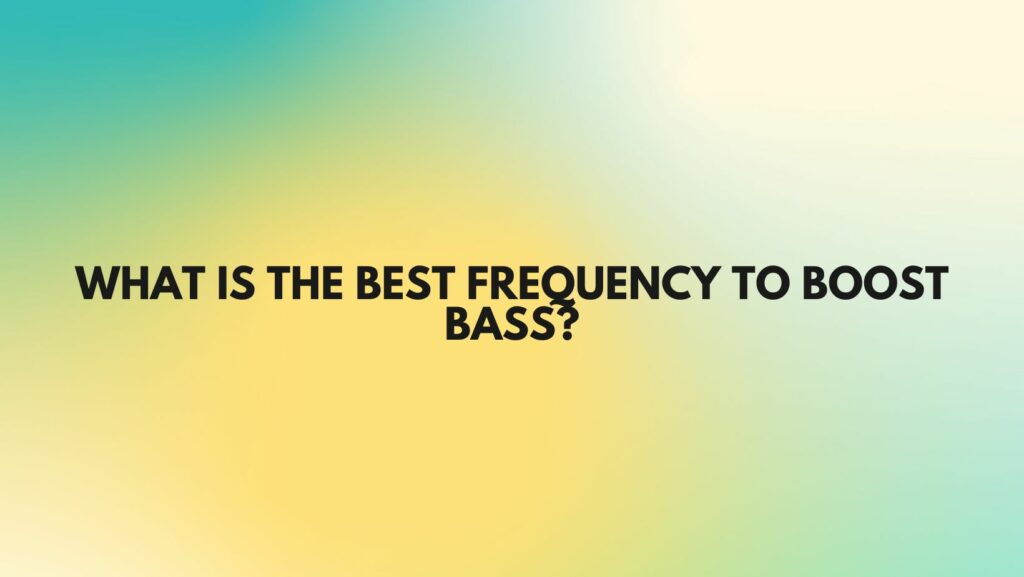Boosting bass frequencies can significantly enhance the richness and depth of audio playback, adding warmth and impact to music, movies, and gaming experiences. However, finding the best frequency to boost bass depends on various factors, including personal preferences, audio content, and speaker characteristics. In this article, we’ll delve into the considerations for selecting the optimal frequency to boost bass and provide insights to help you achieve satisfying results.
Understanding Bass Frequencies: Bass frequencies typically range from 20 Hz to 250 Hz and are responsible for reproducing deep and low-pitched sounds in audio content. Boosting bass frequencies can add weight and presence to music tracks, enhance cinematic low-frequency effects in movies, and intensify the immersive experience in gaming environments. However, excessive bass boosting can lead to distortion, muddiness, and an imbalanced audio mix.
Factors to Consider When Boosting Bass:
- Personal Preferences: Your personal preferences play a crucial role in determining the optimal bass frequency to boost. Some listeners prefer a more pronounced and impactful bass response, while others prefer a more balanced and neutral sound signature. Experiment with different bass frequencies to find the level of enhancement that suits your listening preferences and enhances your enjoyment of audio content.
- Audio Content and Genre: Consider the type of audio content and genre you frequently listen to when selecting the bass frequency to boost. Different music genres and audio recordings may benefit from bass enhancement at specific frequencies. For example, electronic dance music (EDM) and hip-hop tracks often feature prominent bass lines and may benefit from boosting frequencies in the lower range (40 Hz to 80 Hz) for added depth and punchiness.
- Speaker Characteristics: The characteristics of your speakers, including frequency response, driver size, and cabinet design, influence the effectiveness of bass enhancement. Some speakers may naturally emphasize certain bass frequencies, while others may require additional boosting to achieve desired bass levels. Consider the capabilities and limitations of your speakers when determining the optimal bass frequency to boost.
- Room Acoustics: Room acoustics, including dimensions, furnishings, and wall materials, can impact bass response and sound quality. Bass frequencies interact with room boundaries and surfaces, leading to reflections, resonances, and standing waves. Experiment with bass boosting at different frequencies to mitigate room-induced bass anomalies and achieve a more balanced and uniform bass response.
- Use of Equalization Tools: Utilize equalization (EQ) tools and audio processors to fine-tune bass frequencies and achieve desired tonal balance. Parametric EQs allow you to adjust specific frequency bands, making it easier to target and boost bass frequencies effectively. Take a systematic approach to EQ adjustments, listening carefully to the changes and ensuring that the bass enhancement remains balanced and coherent with the rest of the audio spectrum.
Conclusion: Boosting bass frequencies can enhance the richness and impact of audio playback, but it requires careful consideration of personal preferences, audio content, speaker characteristics, room acoustics, and the use of equalization tools. By exploring different bass frequencies and conducting thorough listening tests, you can find the optimal frequency to boost that enhances your listening experience and complements your audio system’s performance. Experimentation, critical listening, and attention to detail are key to achieving satisfying bass enhancement that elevates your enjoyment of music, movies, and gaming.


